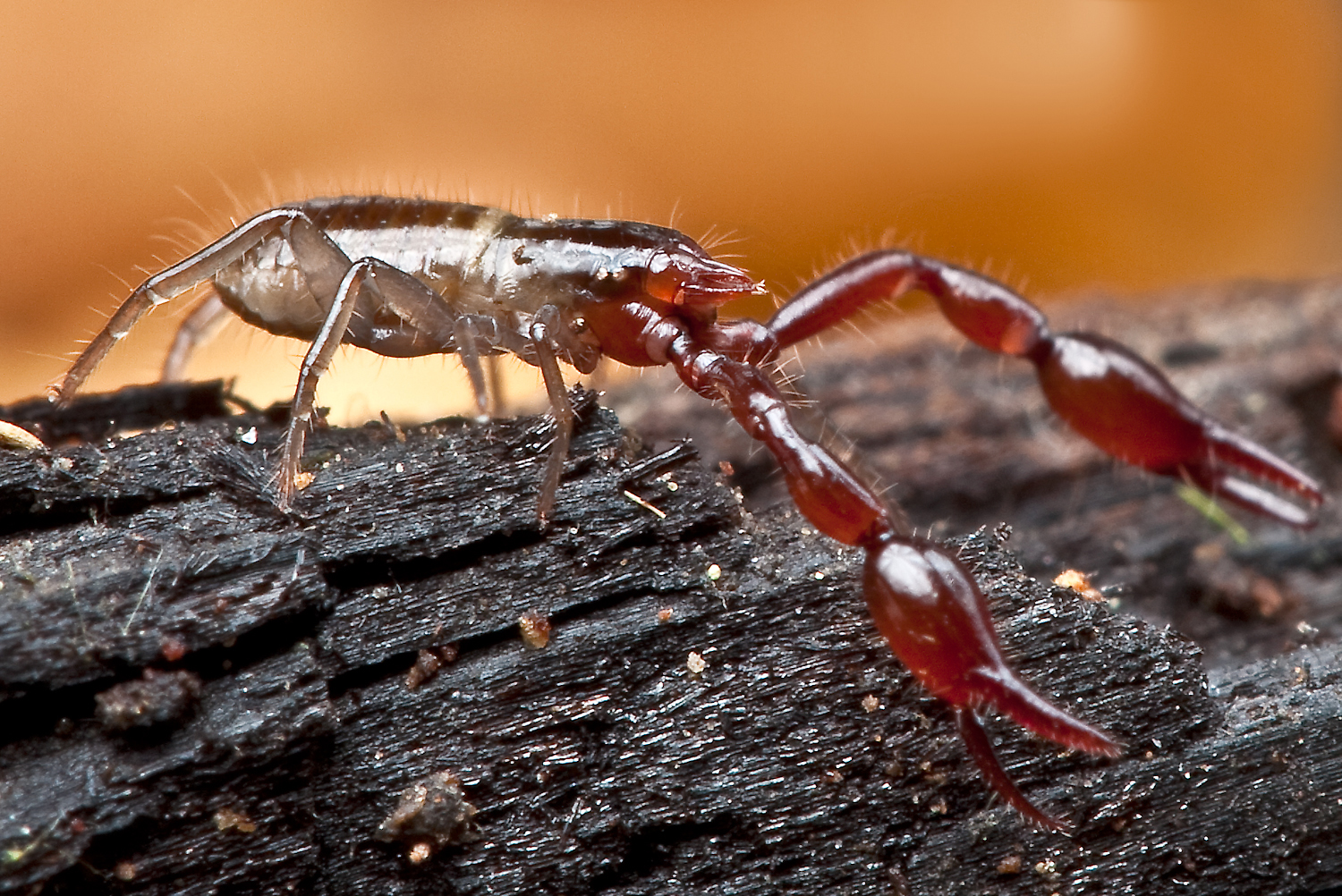Continuing with the plan to divide the animals that live in the soil by size, we come to the meso or middle-sized fauna. Whereas the microfauna we met—protists, nematodes, water bears and rotifers—live in water in the soil, the mesofauna we’ll look at live in air-filled pores in the soil.
Now we’re starting into the realm of things that can be seen without a microscope. These creatures range in size from about a tenth of a millimeter to two millimeters long. That’s still pretty small. Let’s look at four of the most common and abundant types—mites, springtails, pot worms and pseudoscorpions.
Mites are an ancient group of tiny arthropods related to spiders and ticks. They are found in the fossil records of 400 million years ago, and today, over 45,000 species have been identified. Mites are common aboveground as animal parasites, but a whole world of soil-dwelling mites lives just below the surface as well. All mites have exoskeletons, but many species of soil mites have additional armor to protect them. They can weather dry spells pretty well, unlike many other soil dwellers. Some of them hunt springtails and nematodes. Others eat plant material or fungi. Some specialize in micro-organisms like bacteria, and others focus on decaying plant and animal matter.
The springtail is another type of miniature arthropod living in the soil. It has three body segments like an insect, but no antennae or wings. It gets its name from a device it carries under its abdomen called a fercula. This device is held in place by a latch mechanism. When the springtail is disturbed, the latch lets go and the springtail jumps away. It is said that if a springtail was the size of a human, it could jump over the Eifel Tower. To date, over 85,000 species of springtails have been catalogued. They are found in most soils in abundance, comparable to the soil mites. Most species eat microbes like algae and fungi as well as decaying plant material. Some go after nematode eggs, rotifers and water bears. Their lifecycles are short in most species, lasting a few weeks. Some species, however, have much longer cycles.
Pot worms are very similar to earthworms except way smaller. Over 650 species have been identified. They move through the soil, ingesting it like their bigger cousins, and recycle the nutrients they find there. They feast on microbes like bacteria and decaying plant material. Some are particularly fond of fungi. Also like earthworms, they are hermaphrodites and carry male and female reproductive organs. They take two to three months to mature and then can live up to a year, sliding through the soil, helping to break down and recycle nutrients. They need to be moist in order to breathe through their skin, so they don’t tolerate drought very well.
Pseudoscorpions are tiny (2-8 mm long) versions of those arachnids with the powerful sting. Pseudoscorpions don’t have a stinger though, and the poison they make is to subdue their prey. They live in ground litter eating mites, and other small arthropods. They sometimes attach themselves to the legs of flying insects like flies and beetles, and hitch a ride to a new location. They live for two or three years, and spin silk like other arachnids. With the silk, they build chambers for wintering, molting or brooding. They can weather dry spells, but aren’t found in large numbers.
Other types of soil mesofauna include pauropods, which look a bit like miniature centipedes with segmented bodies and nine to eleven pairs of legs; symphylids, which resemble miniature centipedes even more; diplurans, a kind of primitive blind insect; and proturans, another kind of wingless primitive insect. These creatures all live by the thousands, even millions, in the top layers of soil and leaf litter. Measured in millimeters, they are major players in a dynamic world that exists just beneath the grass and the corn.
Photo by Marshal Hedin. Alt text: Tiny arachnid with 8 legs. Front legs are tipped with heavy claws like those of a crab or a scorpion. Little guy lacks a stinger.
